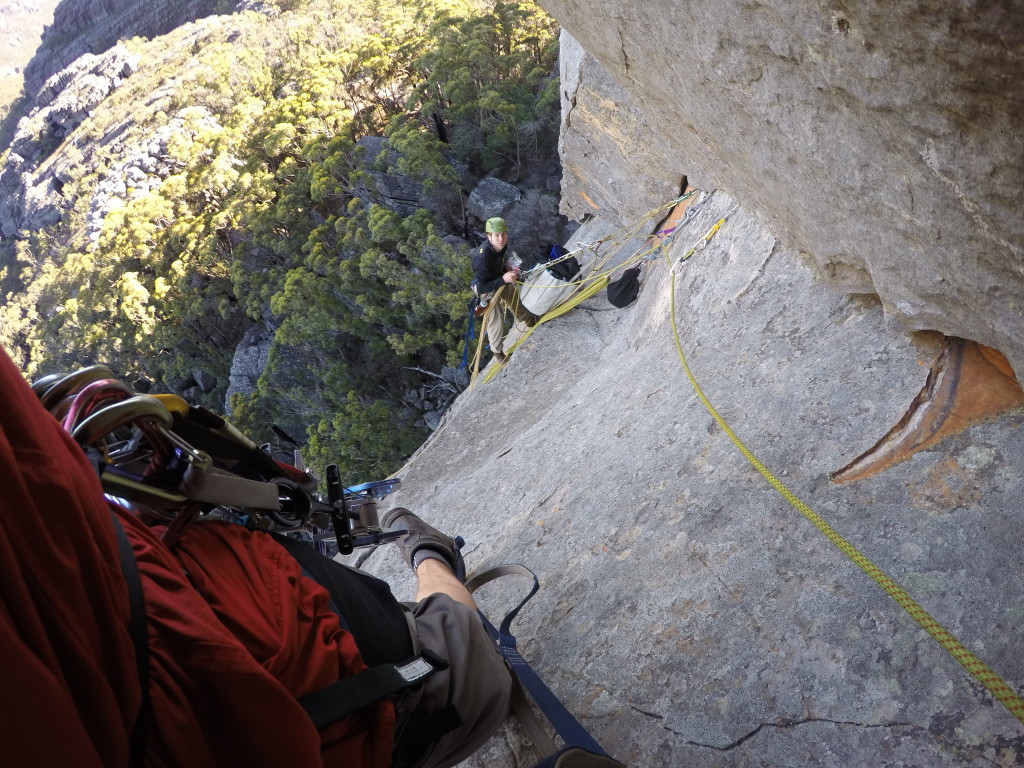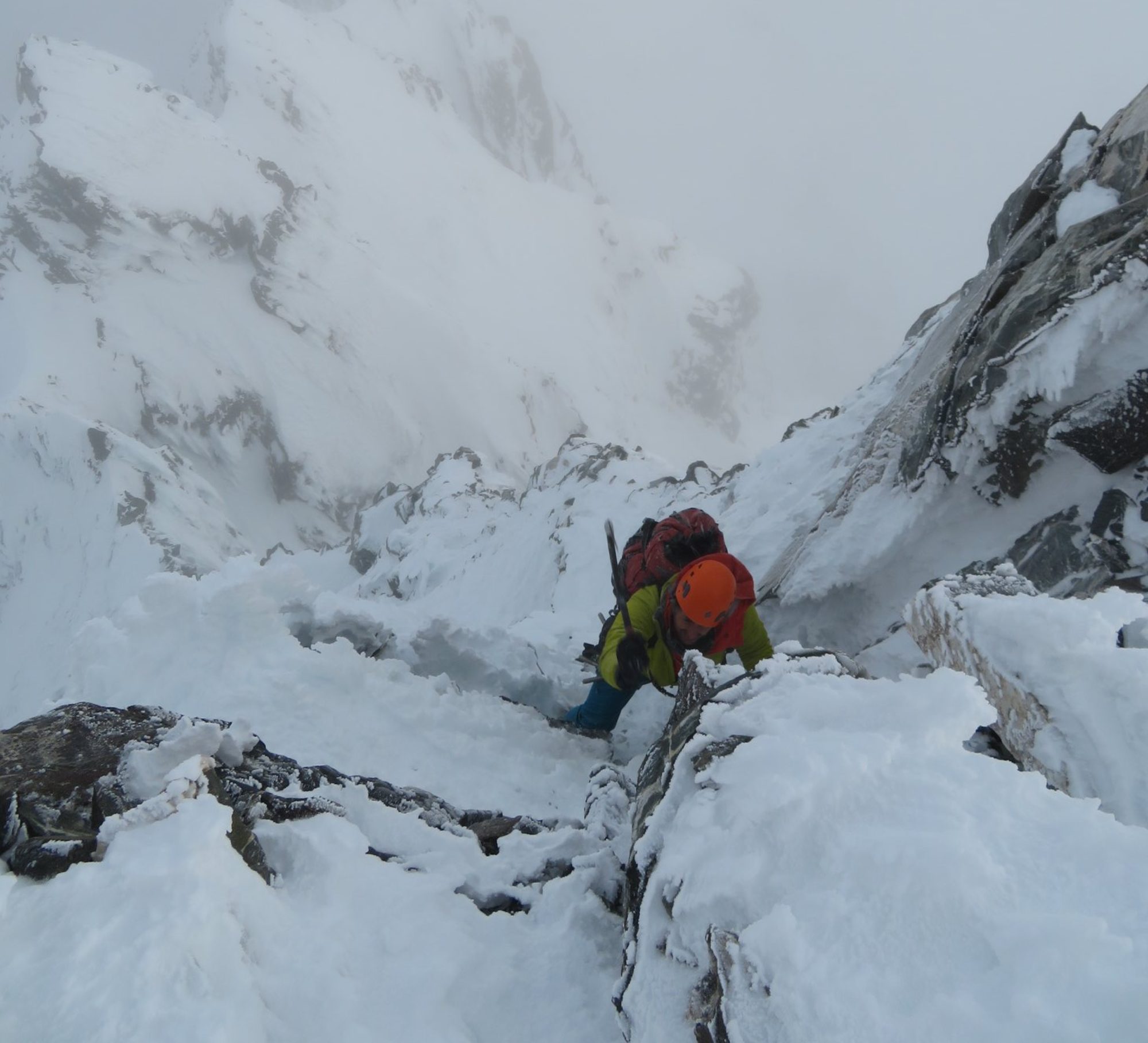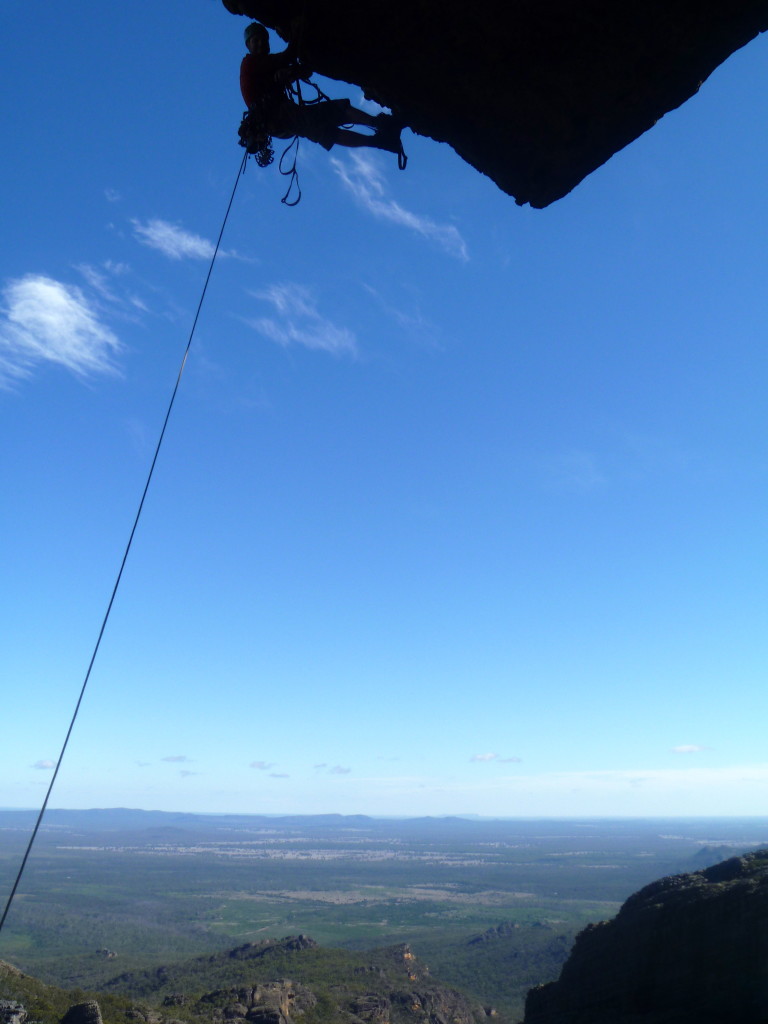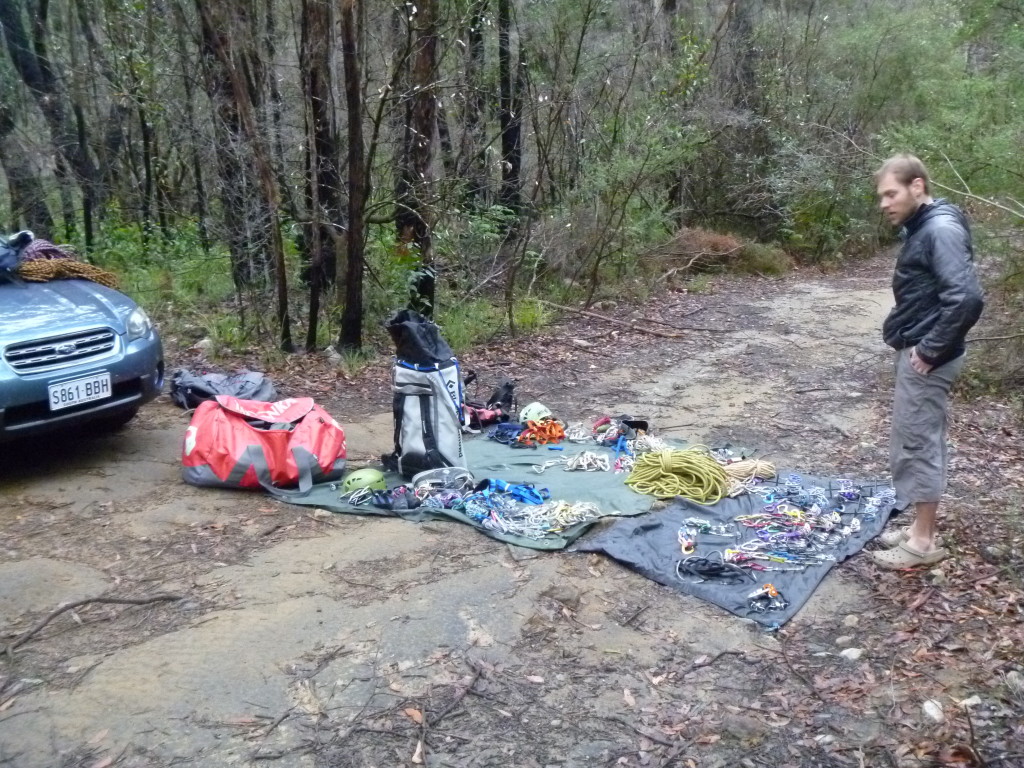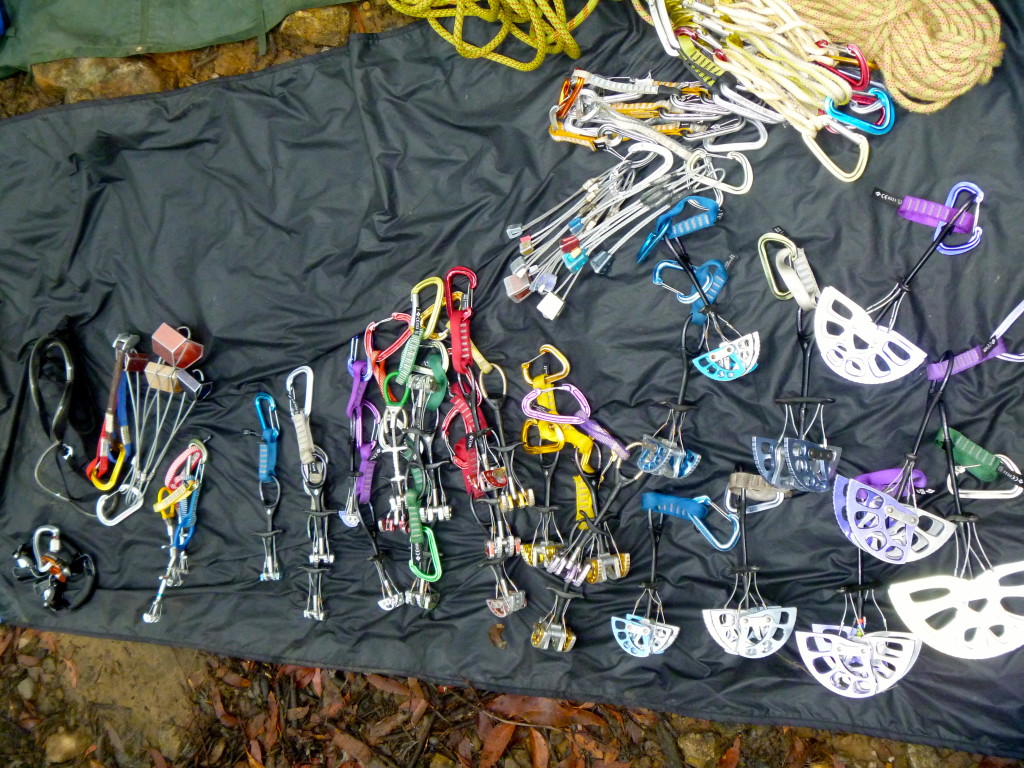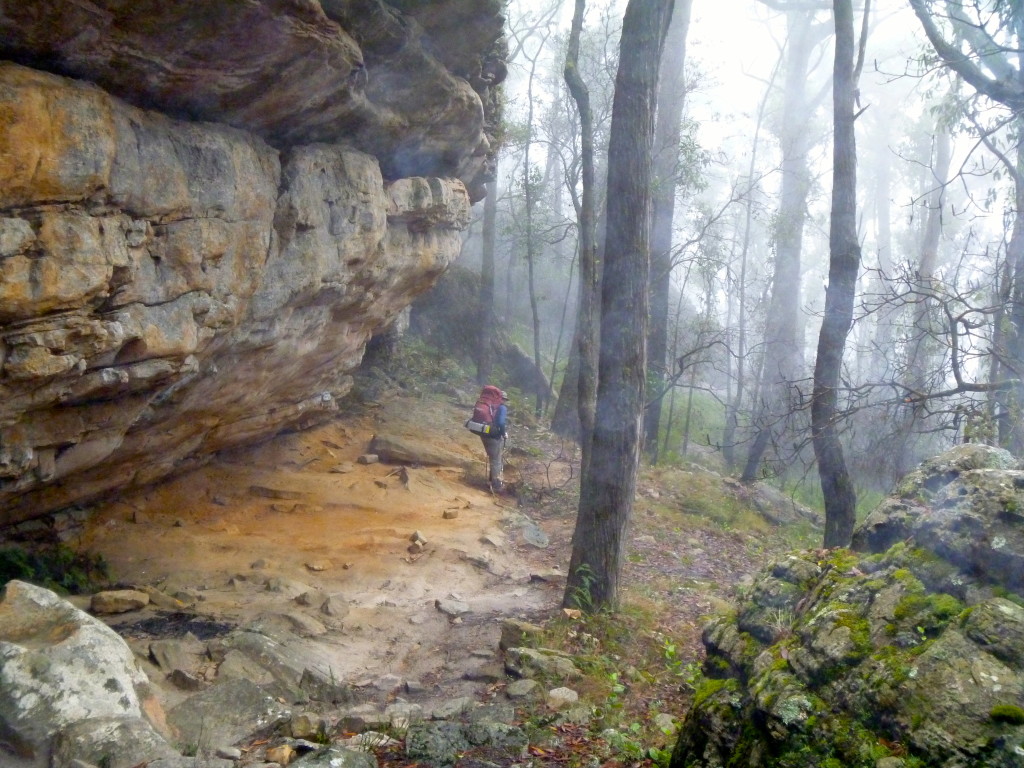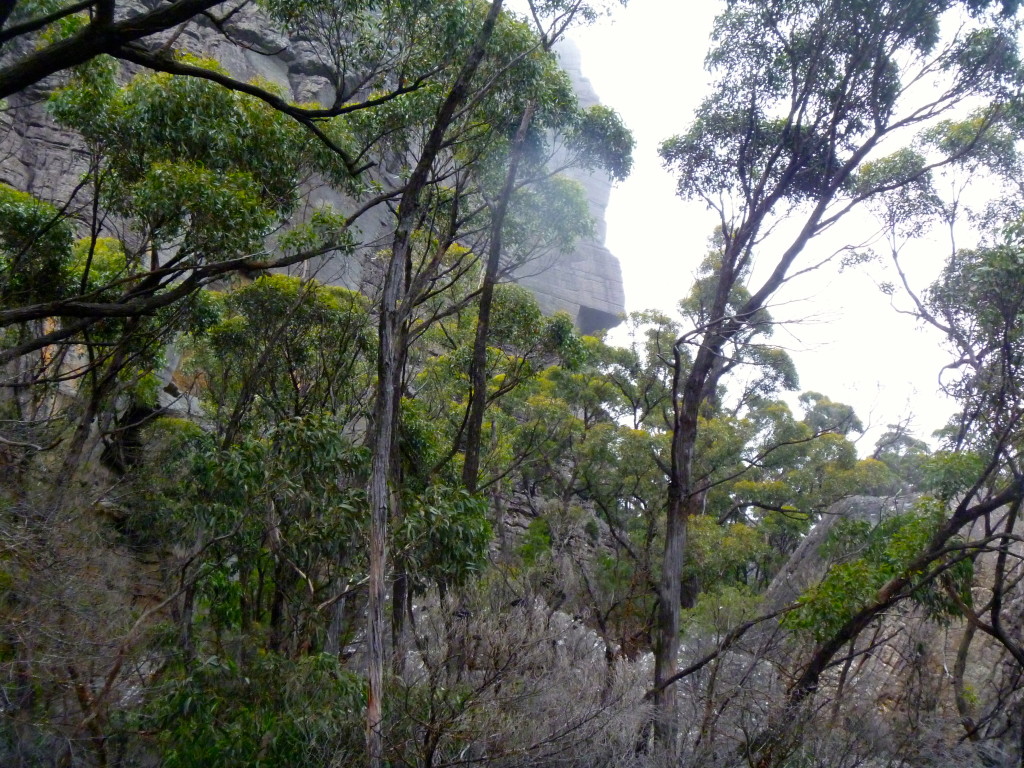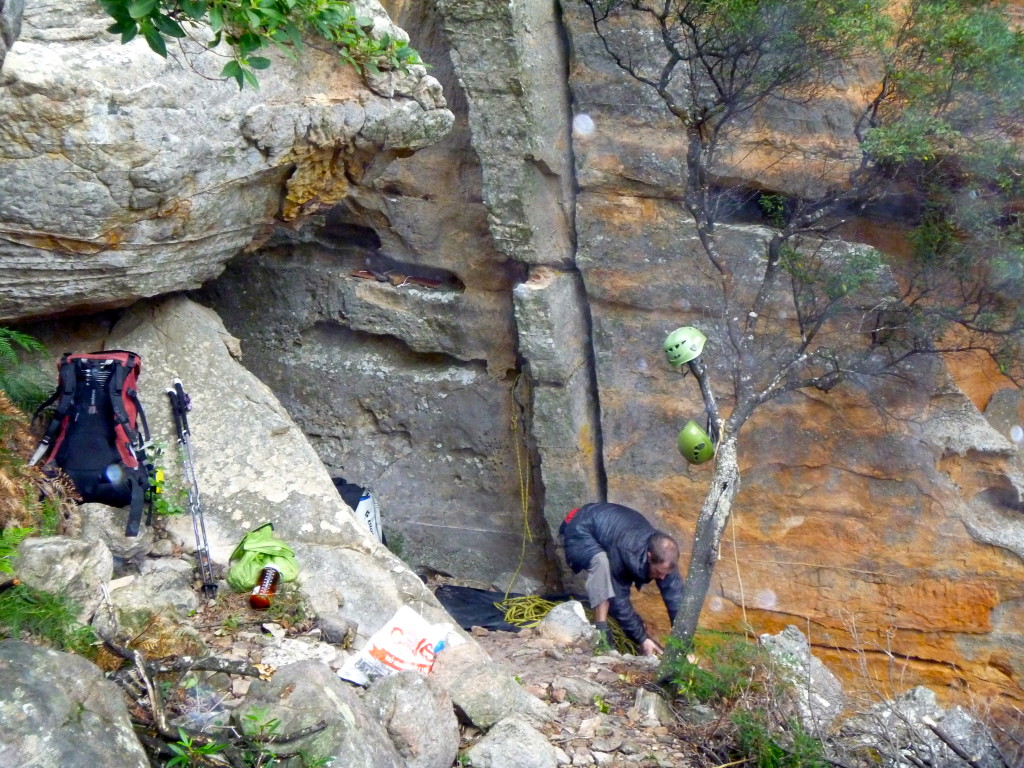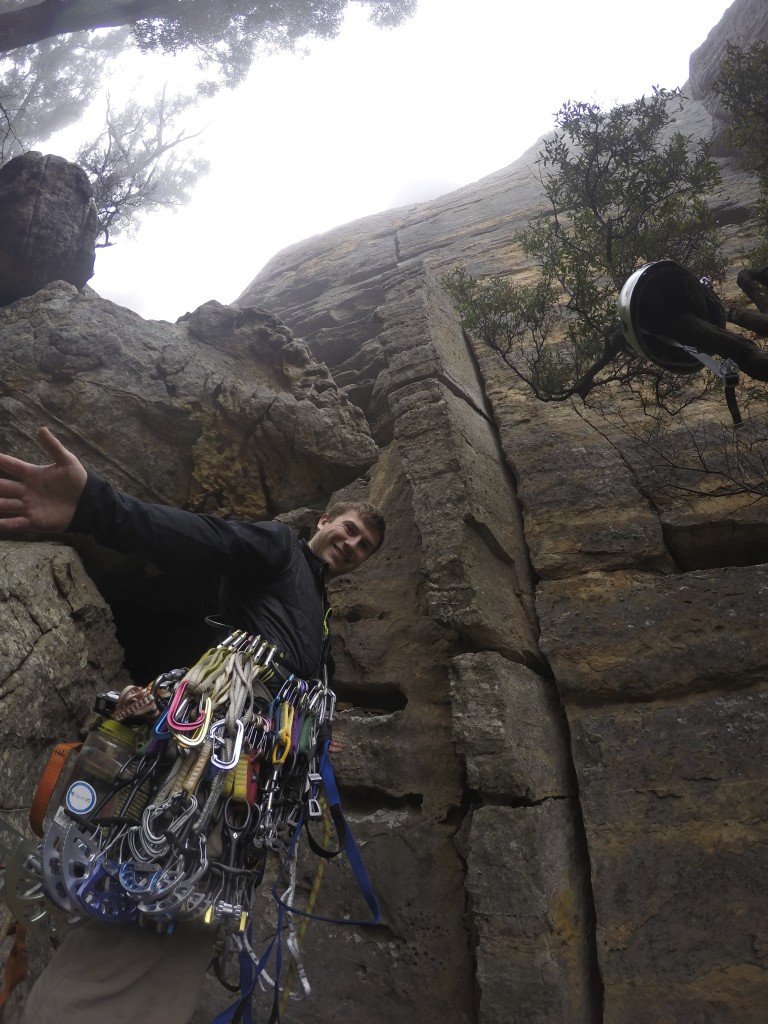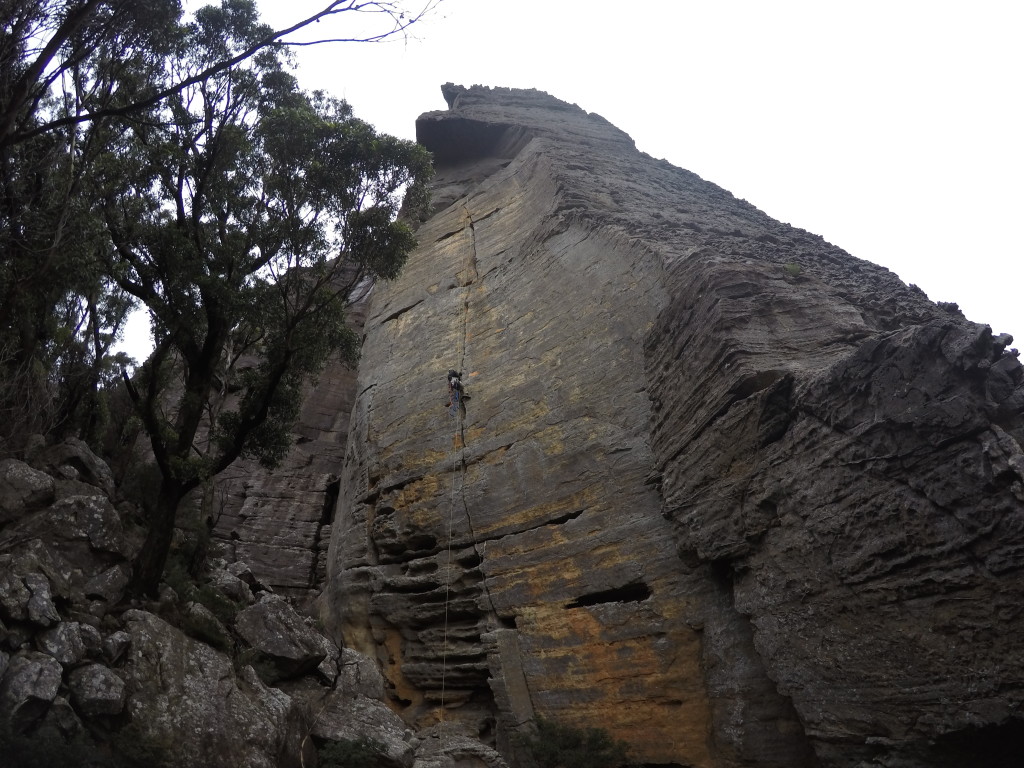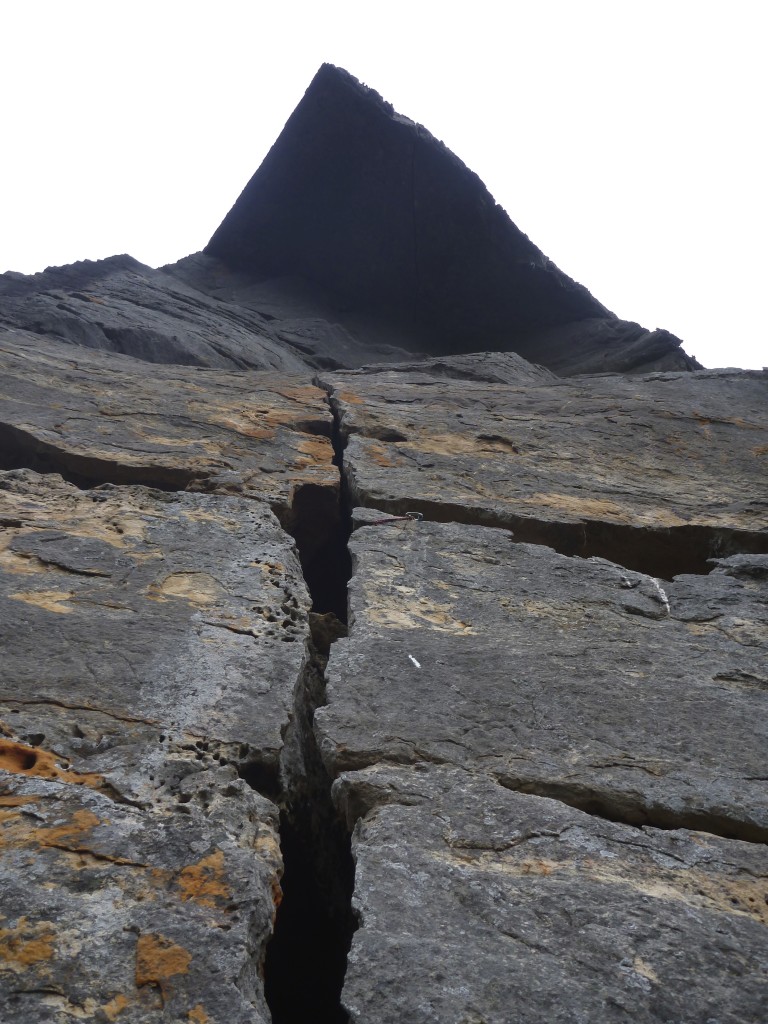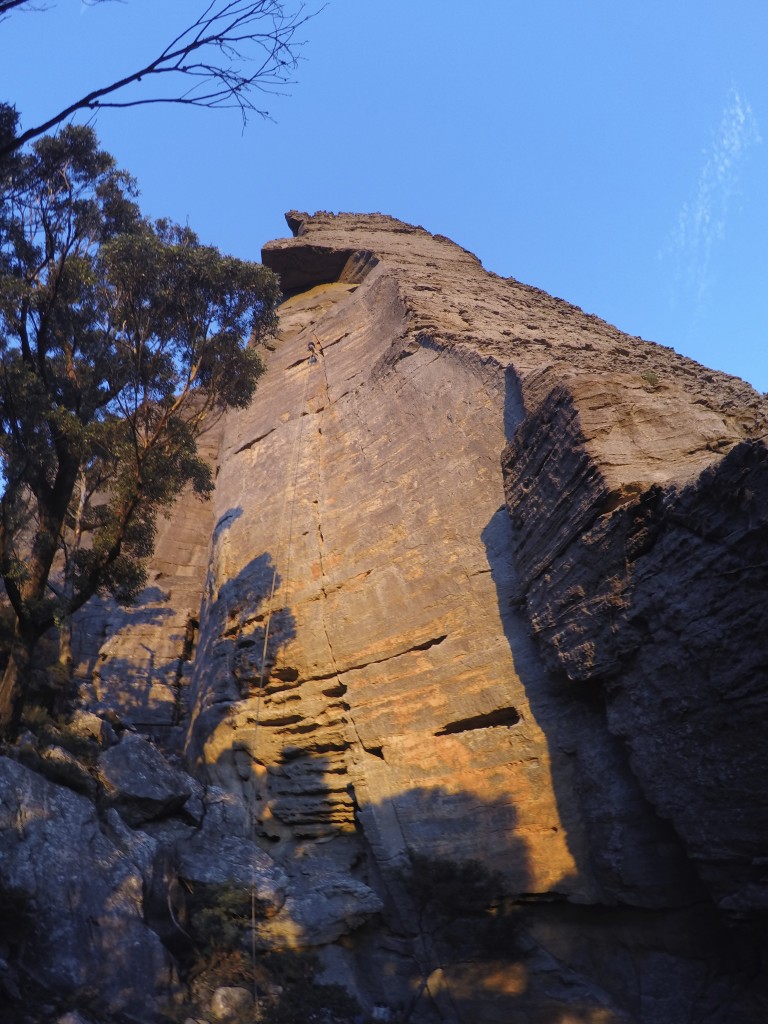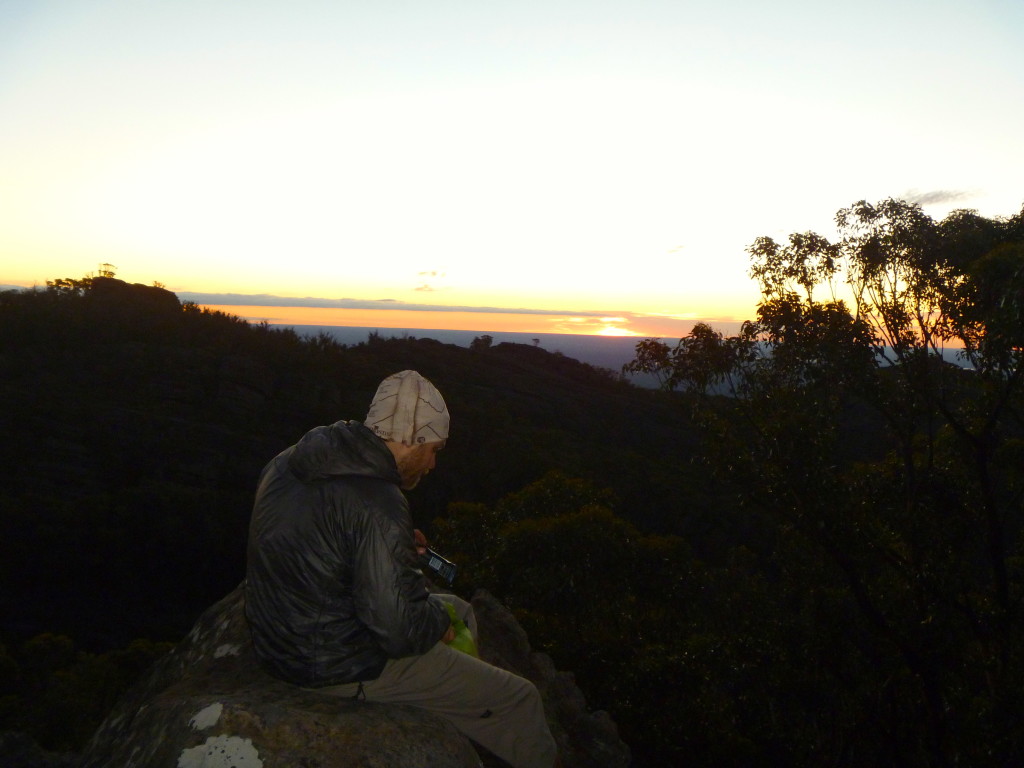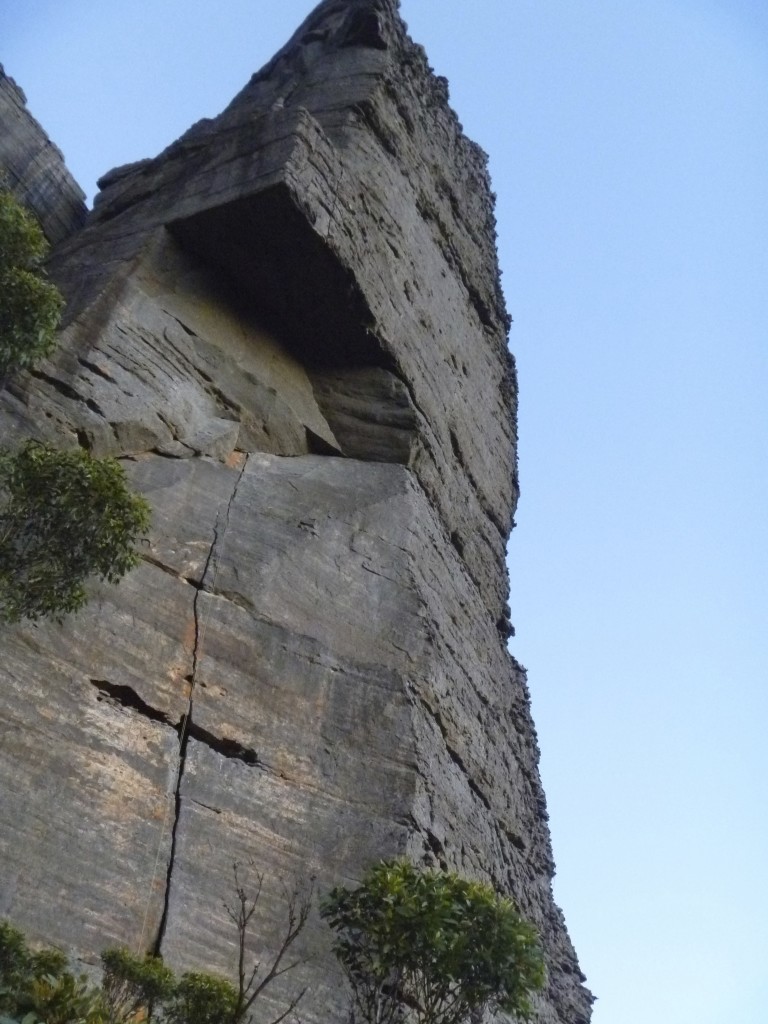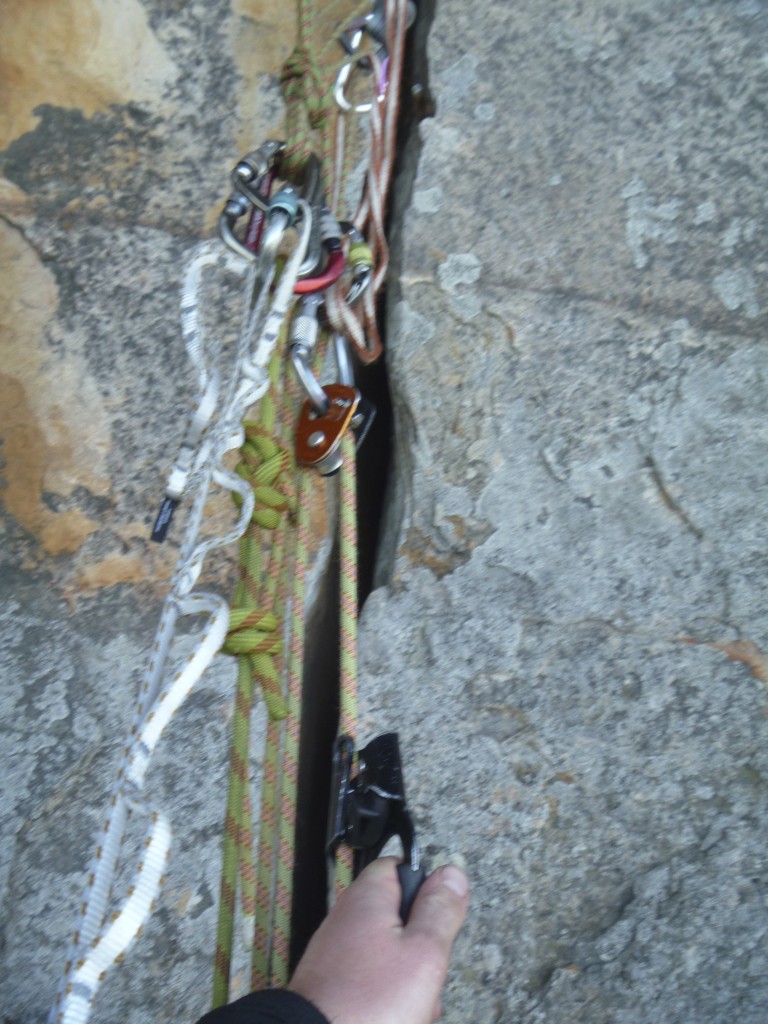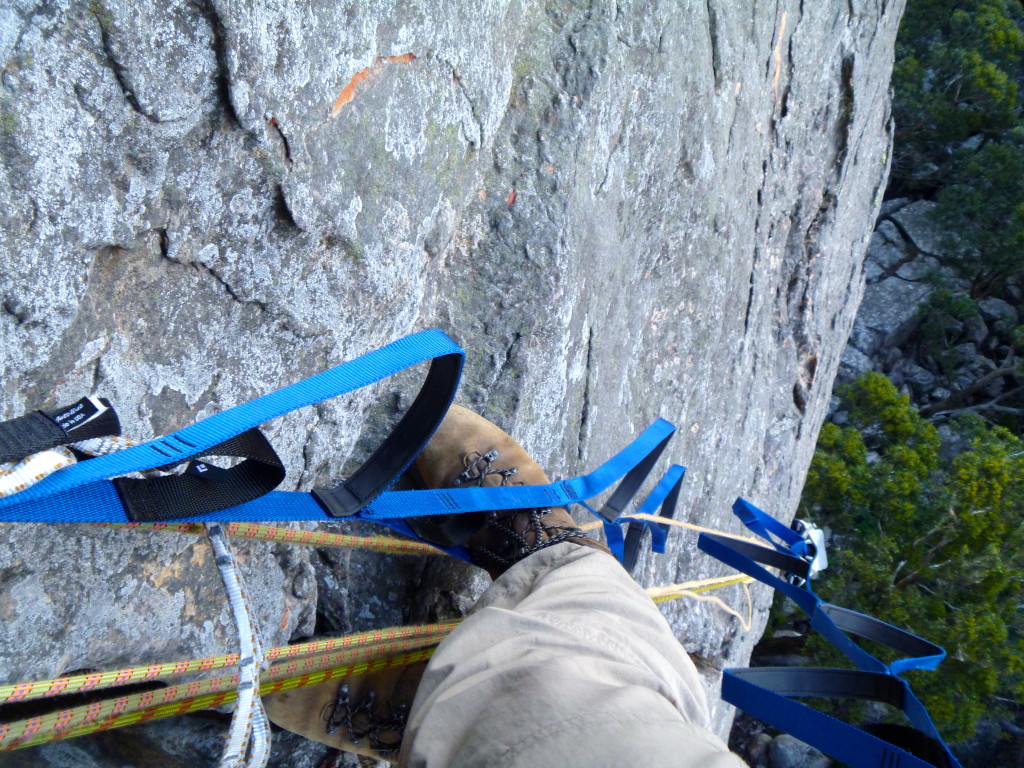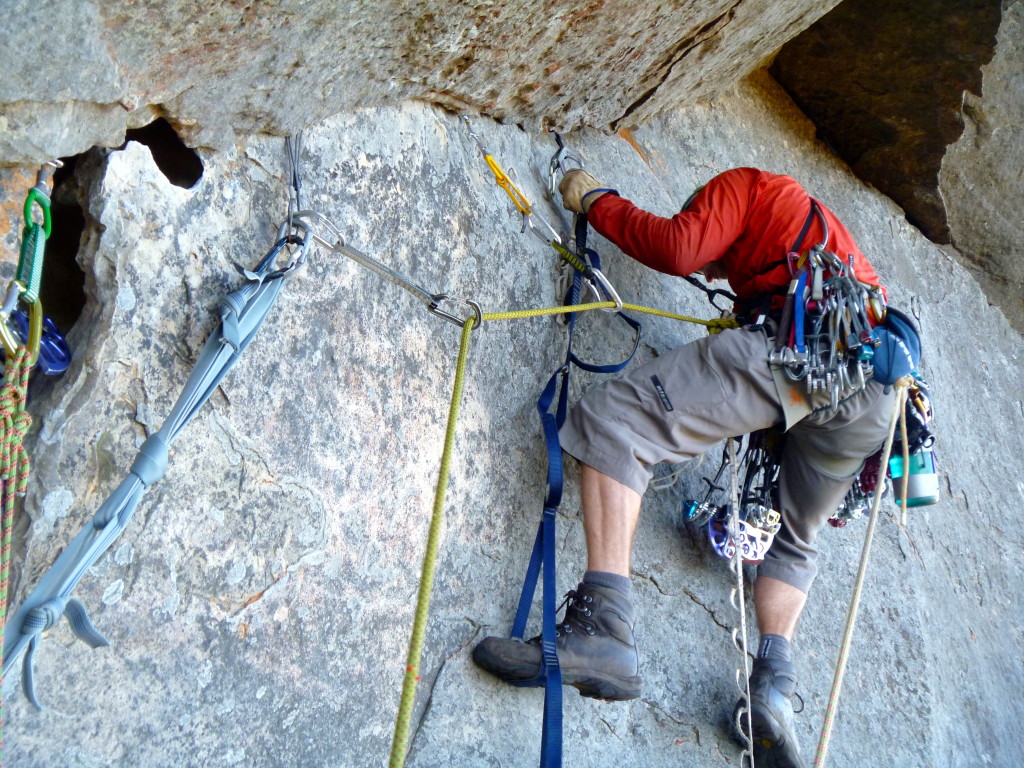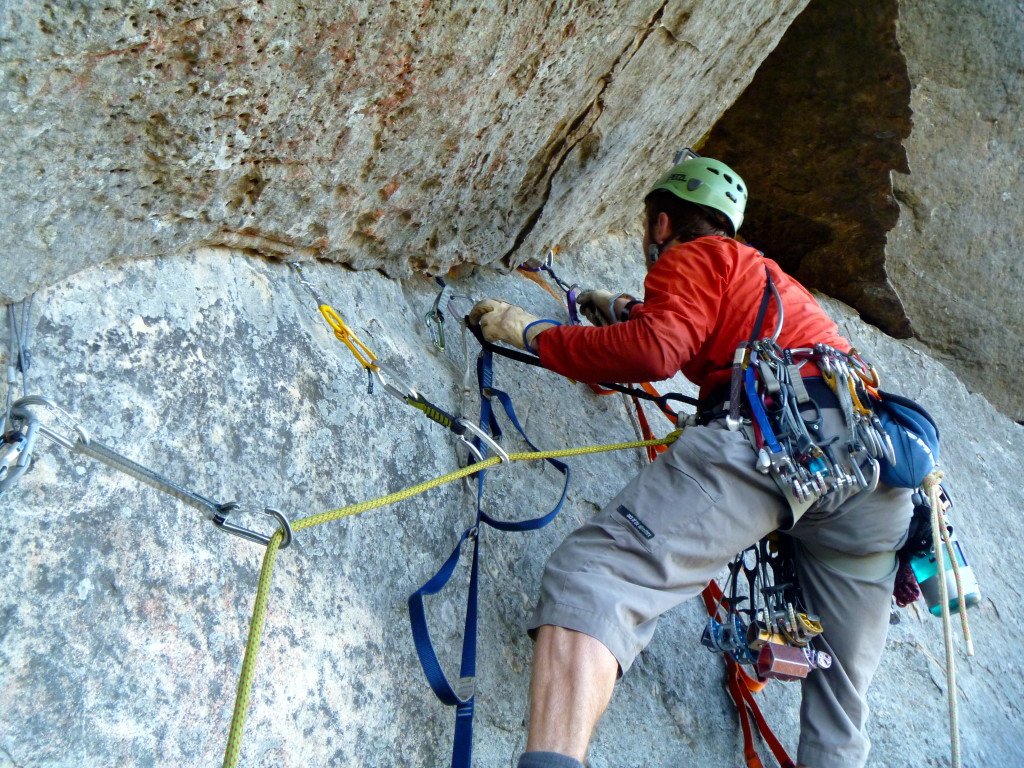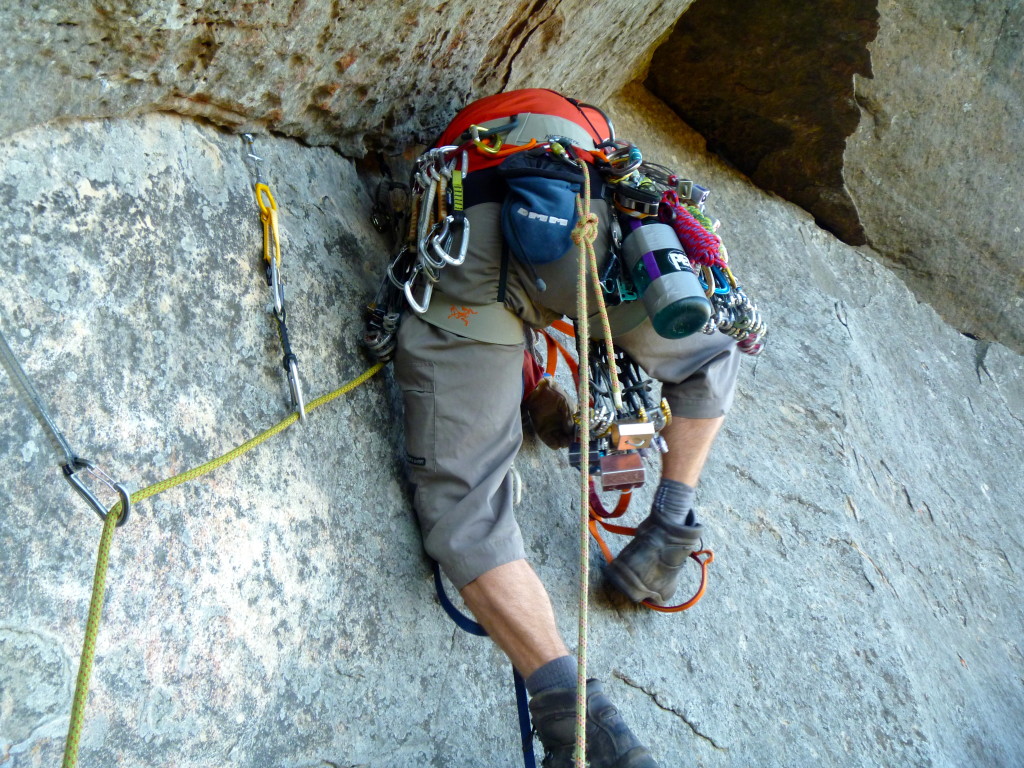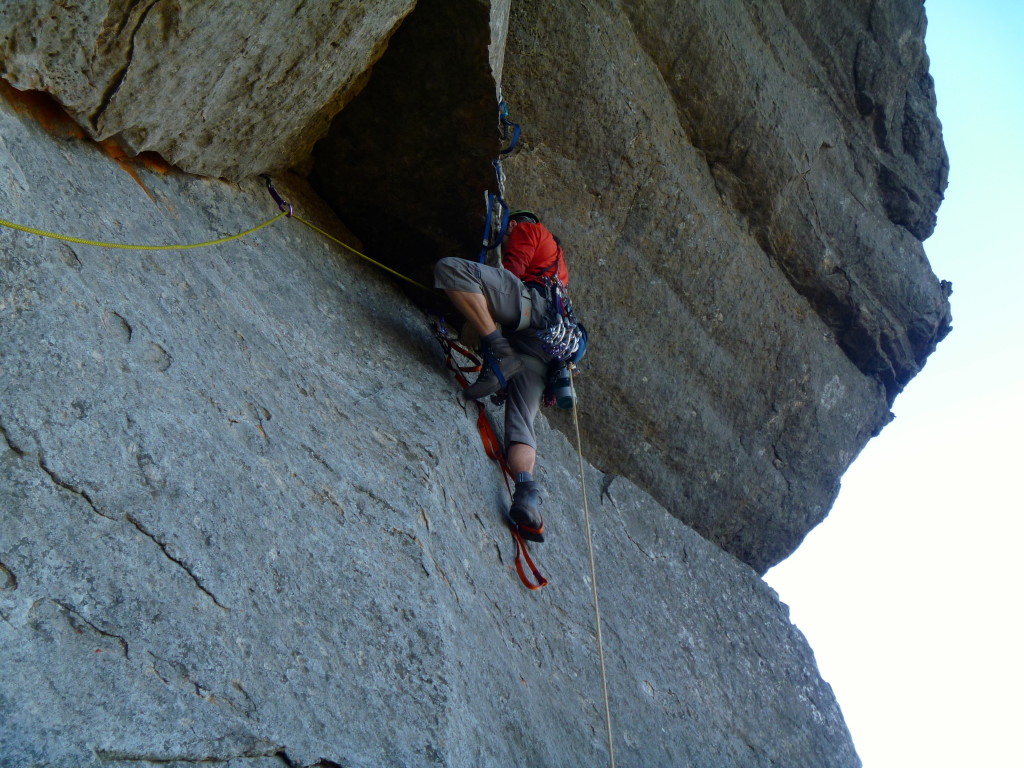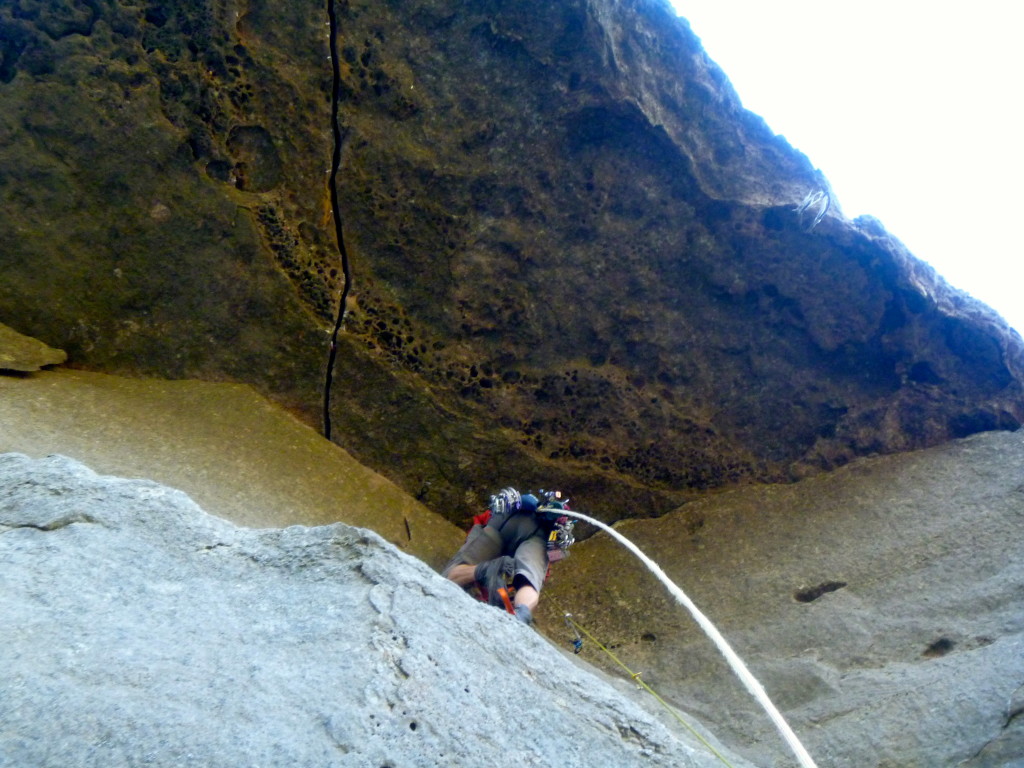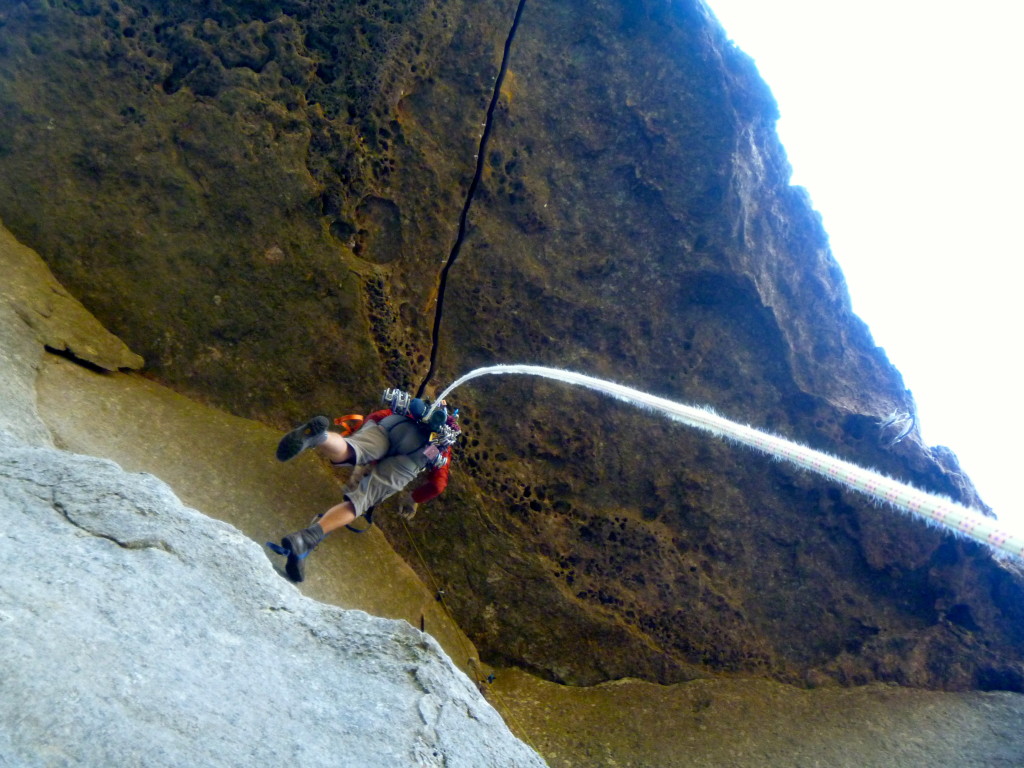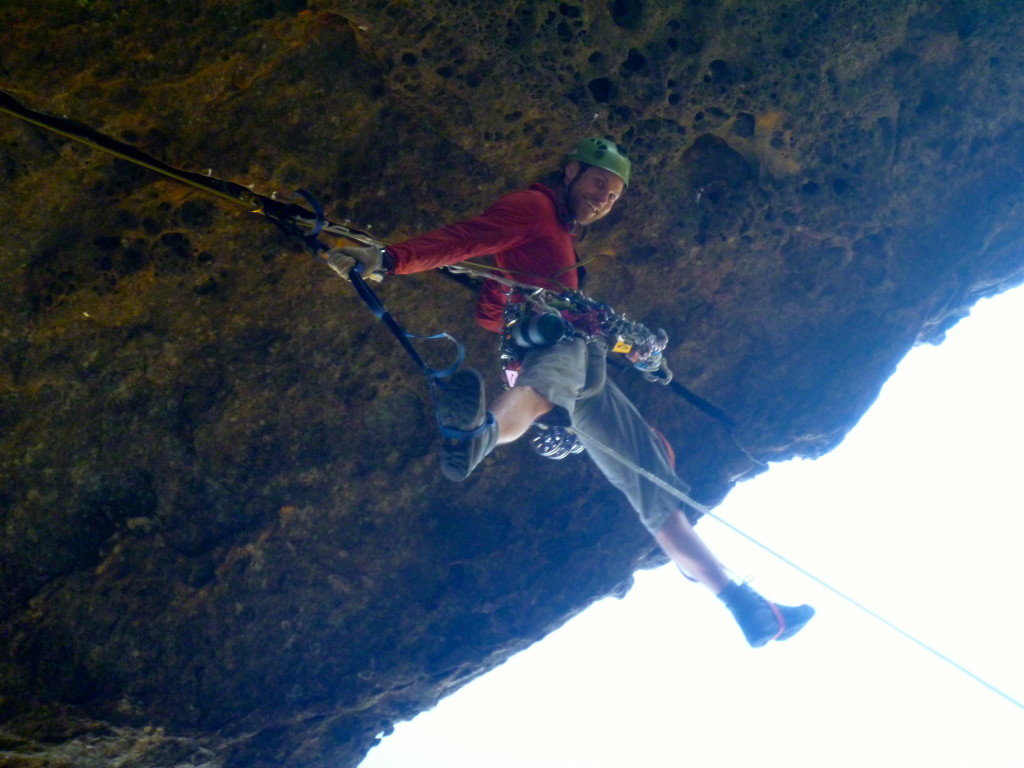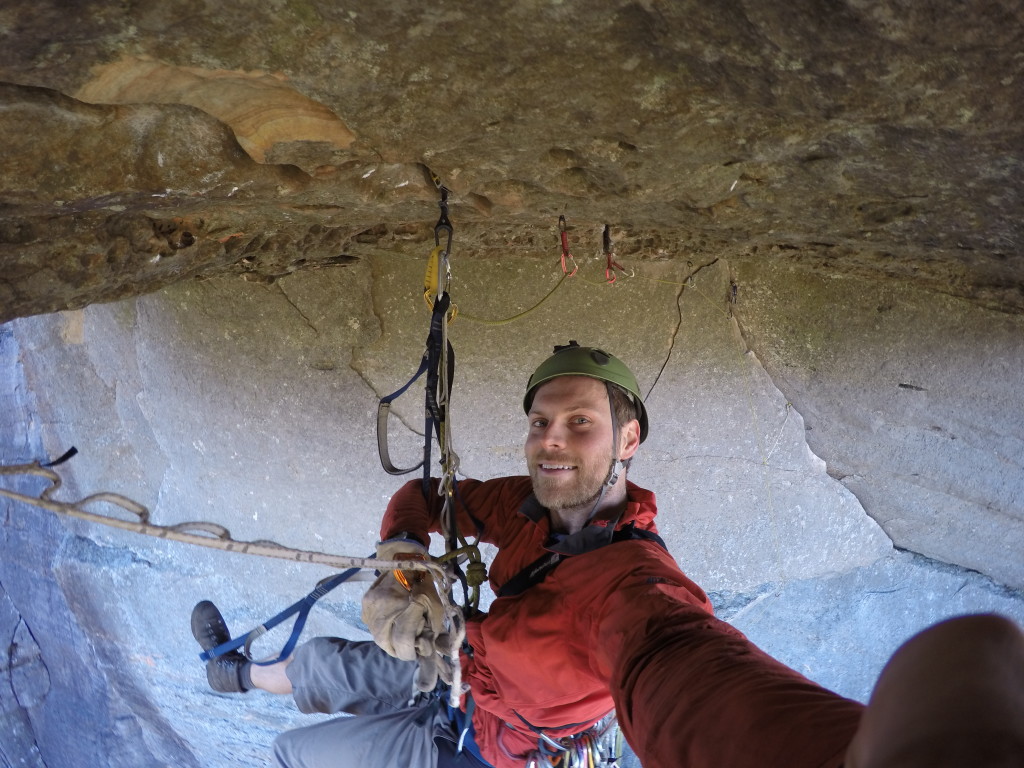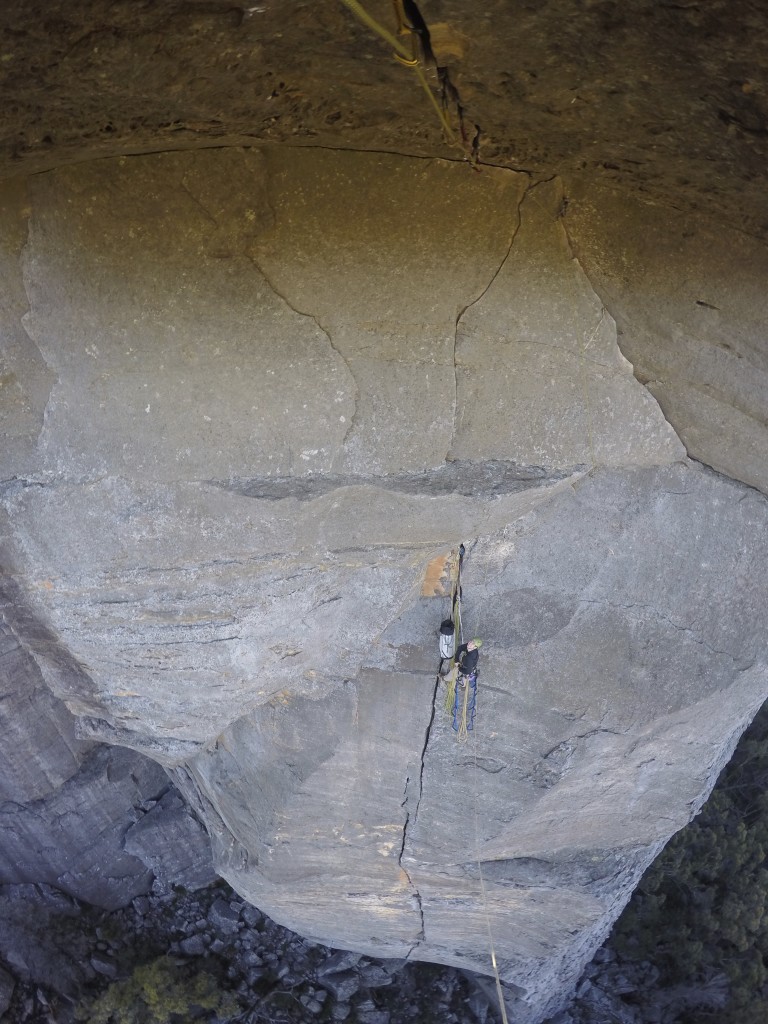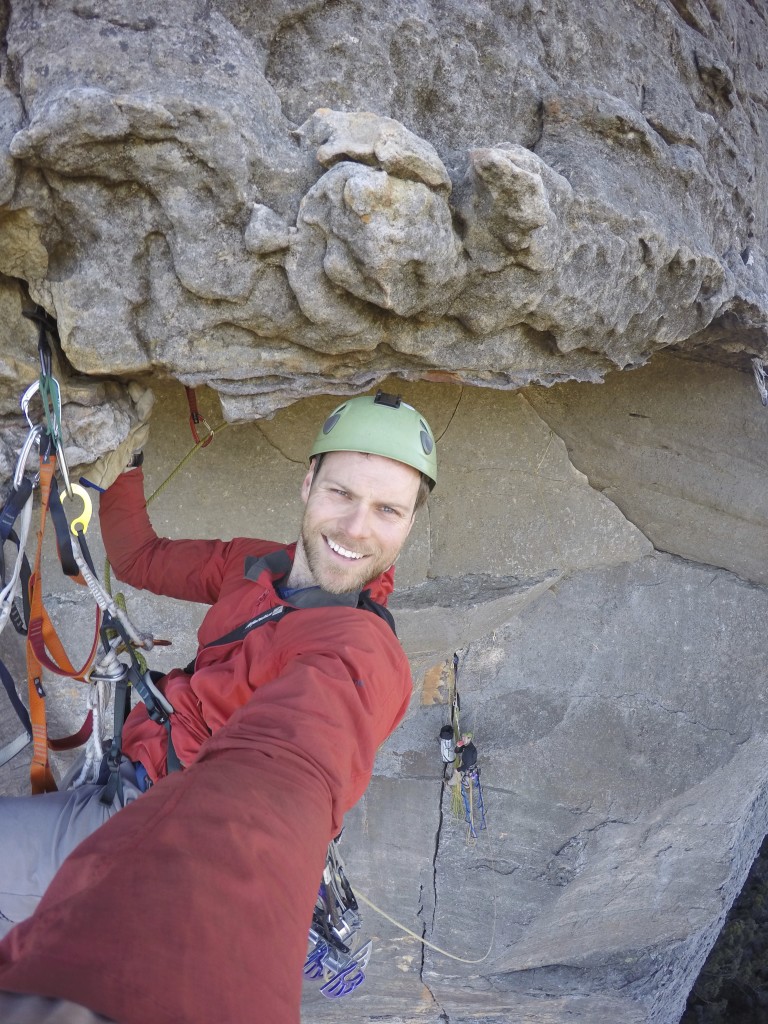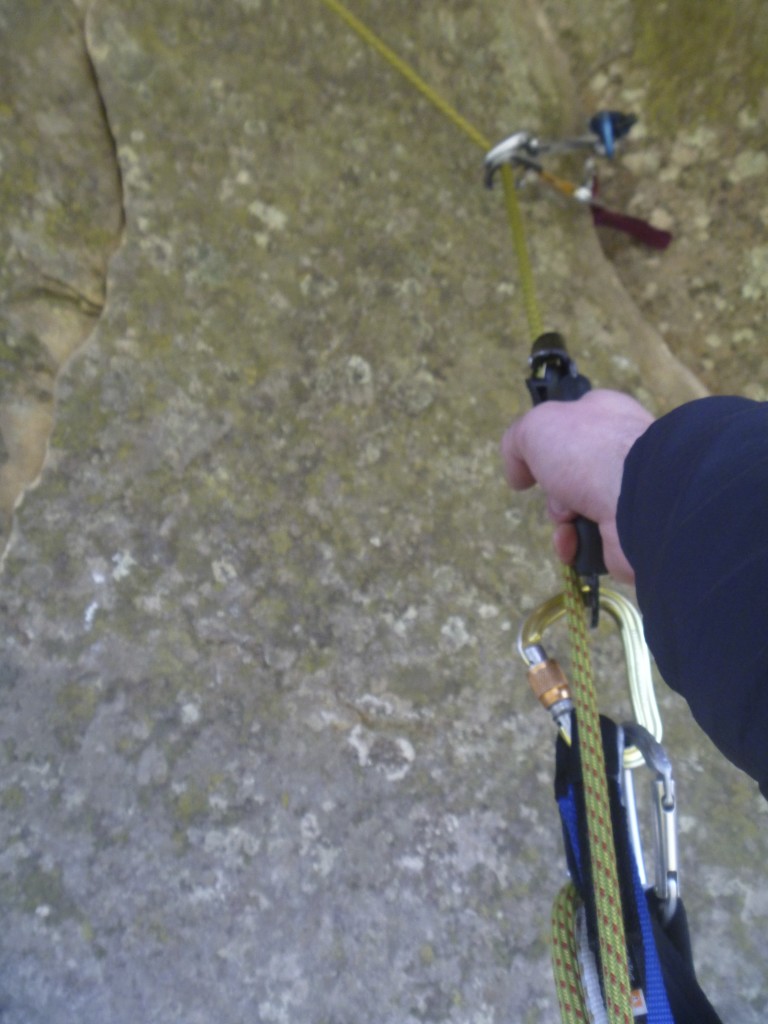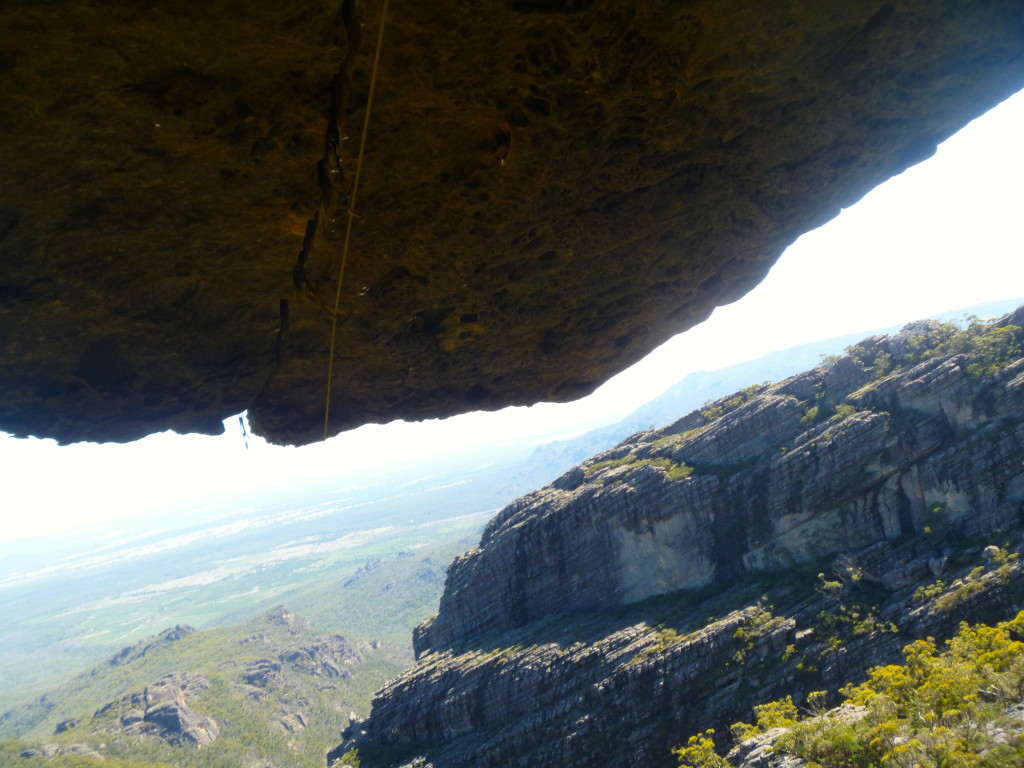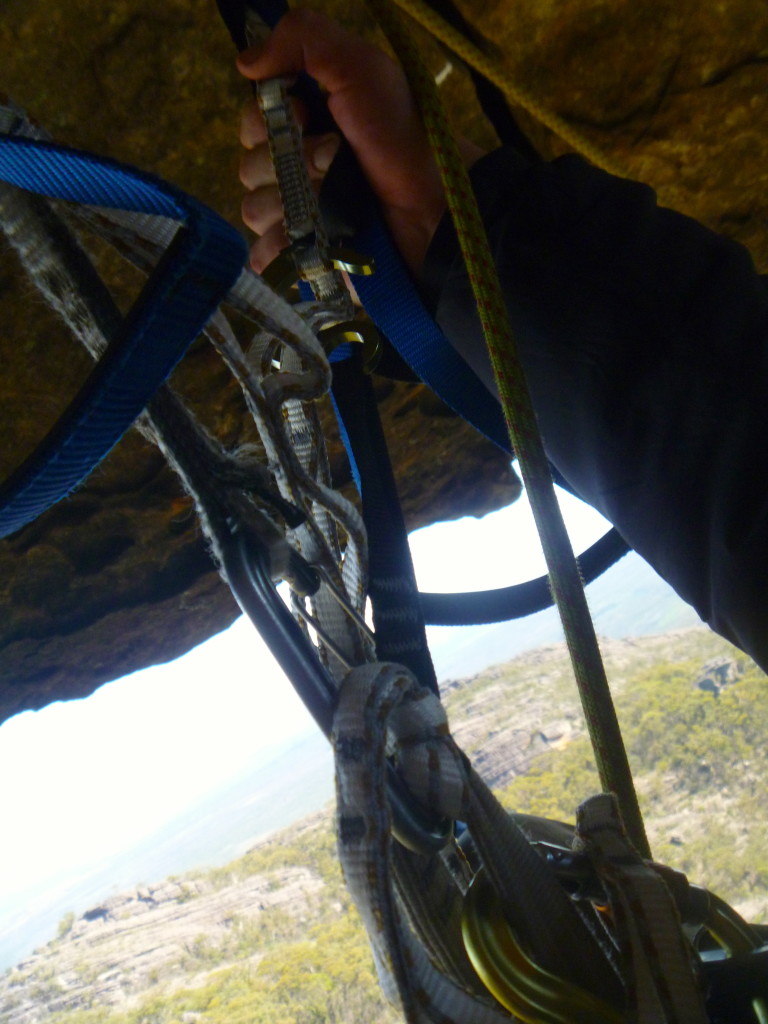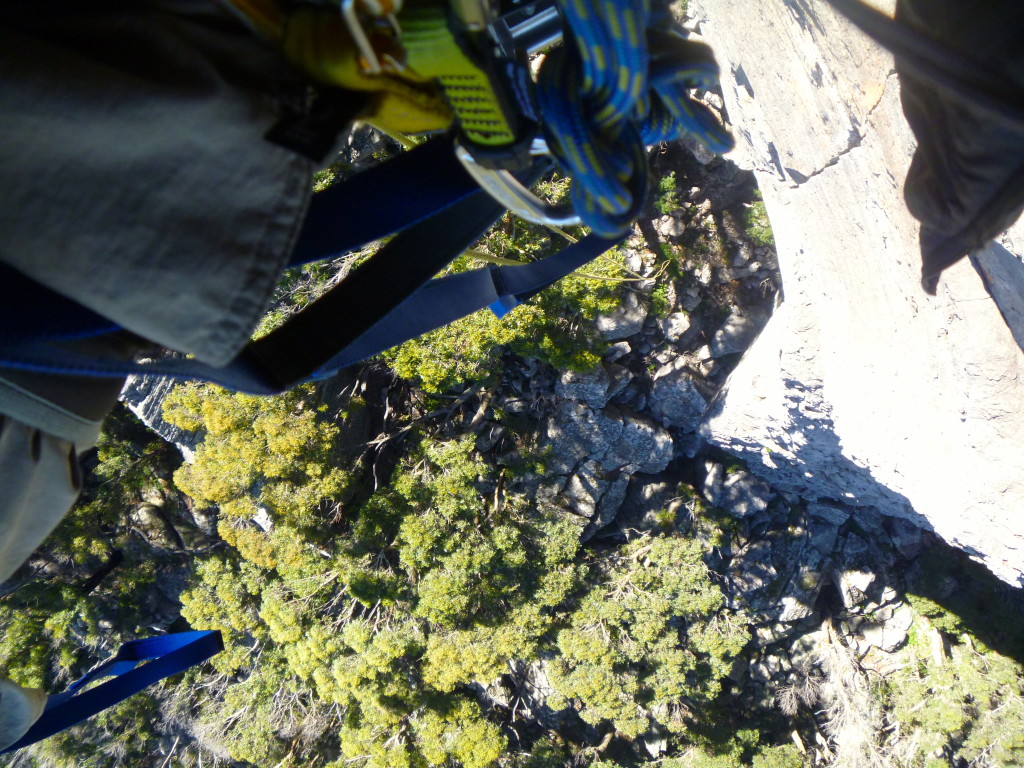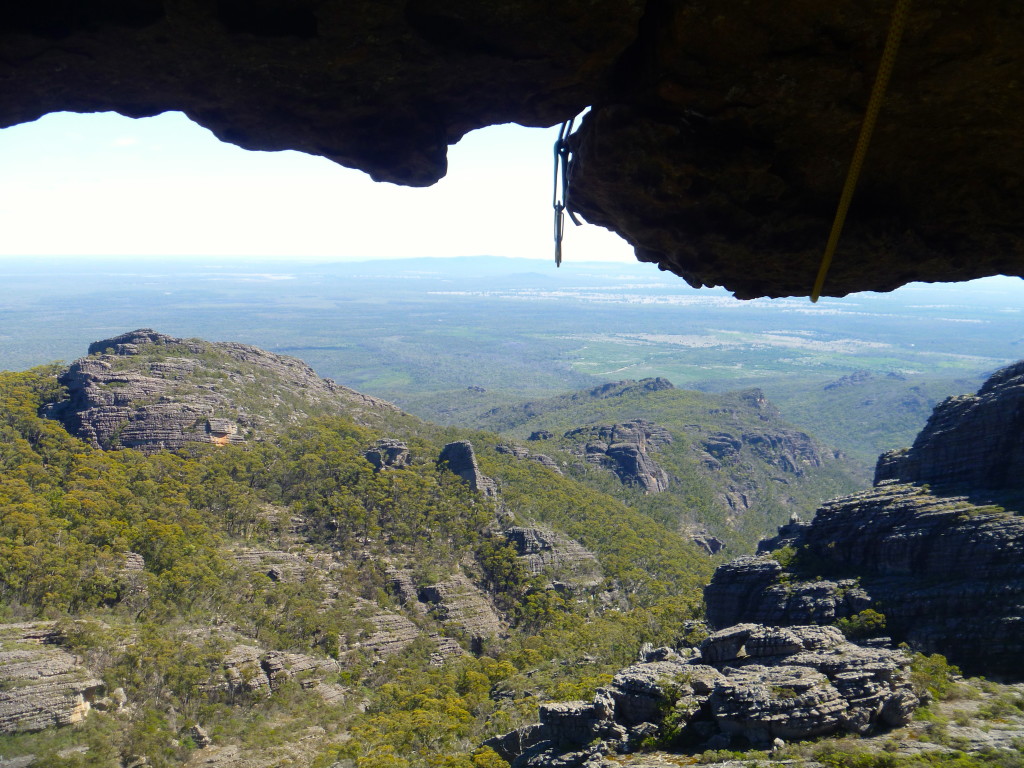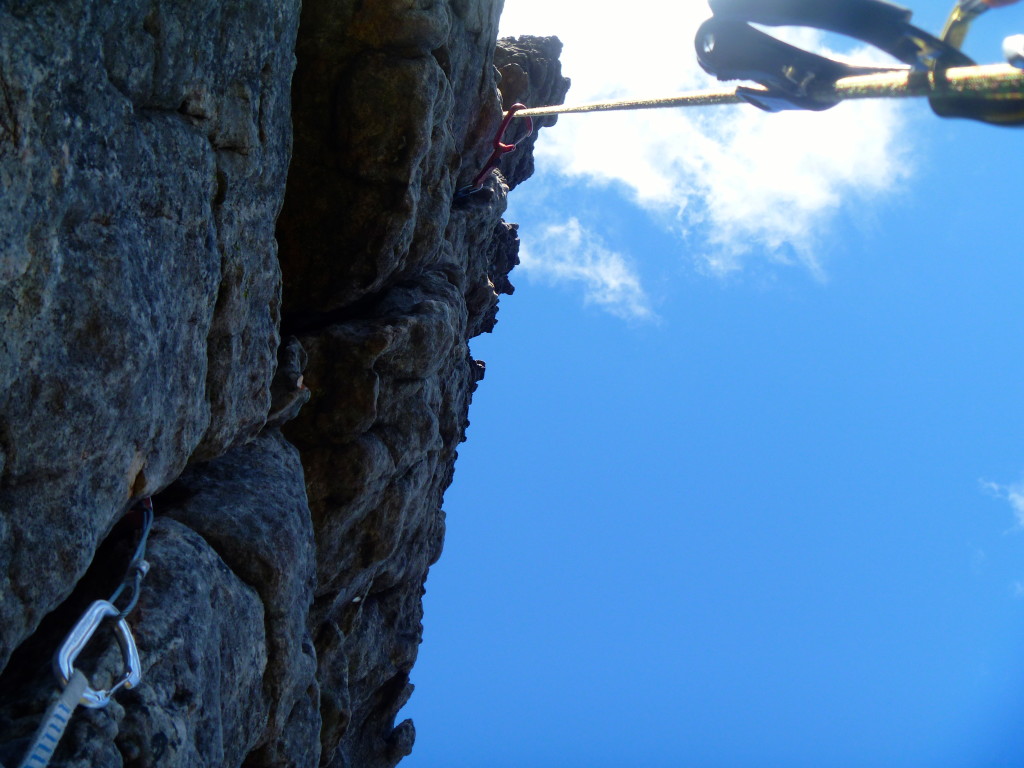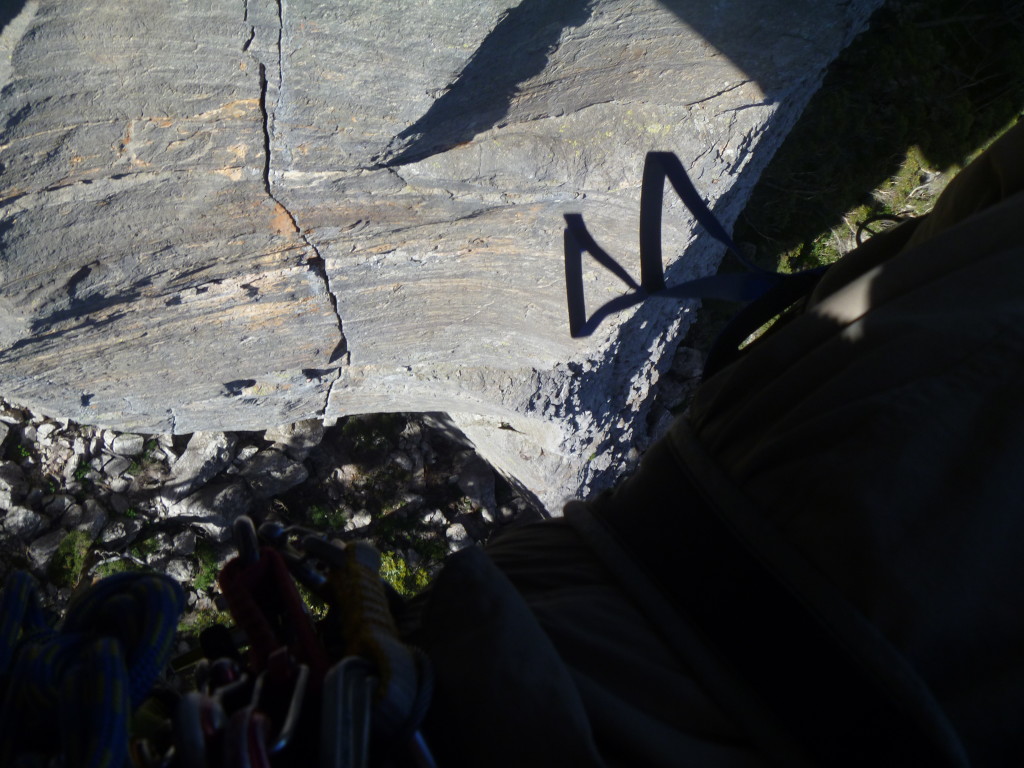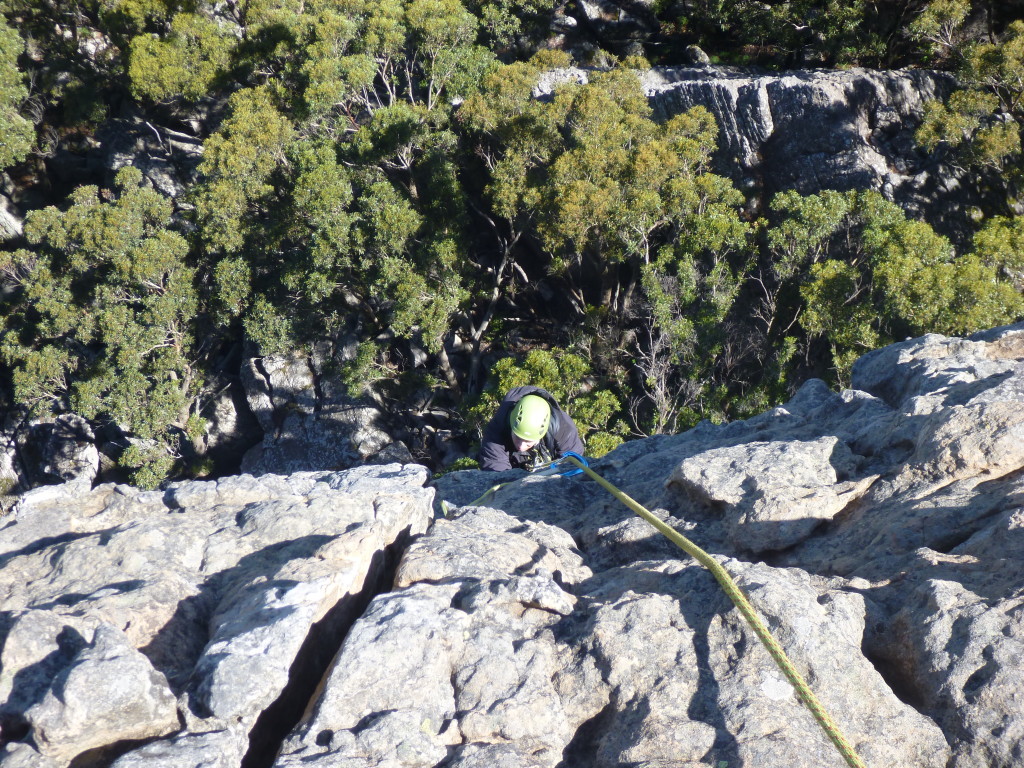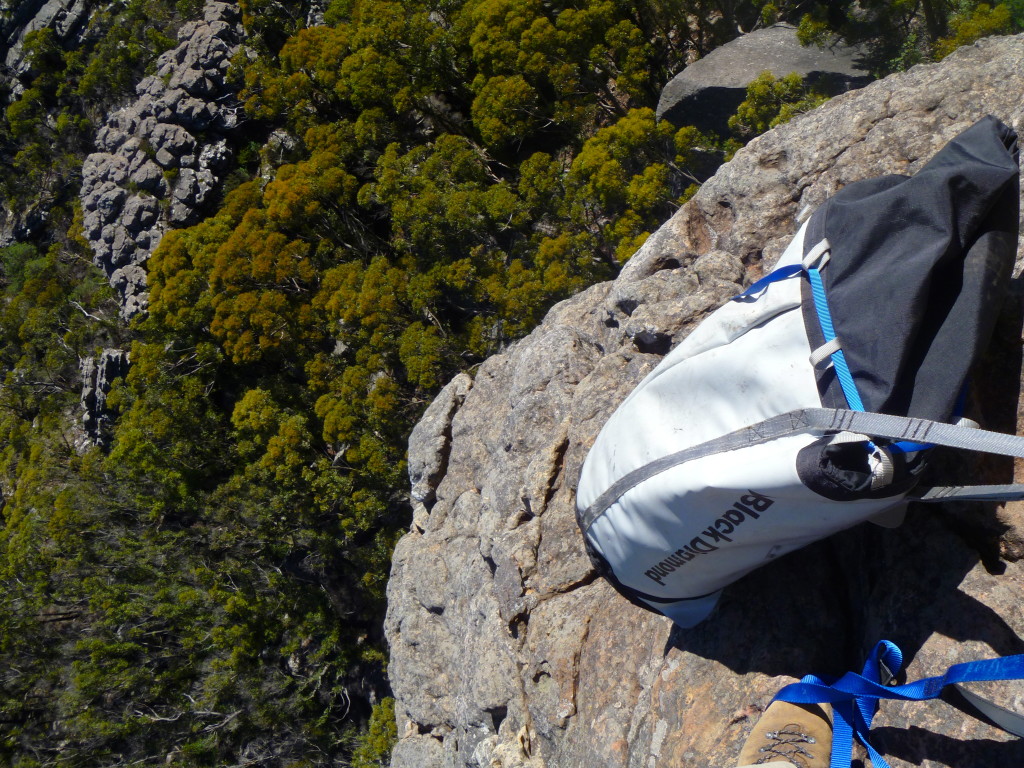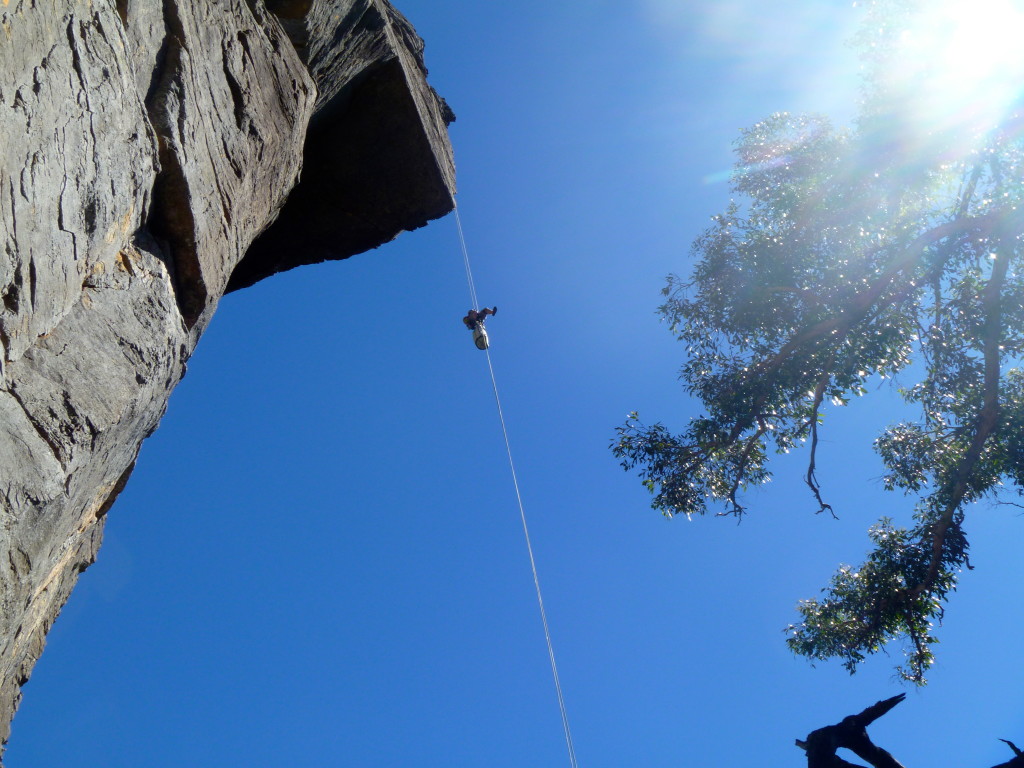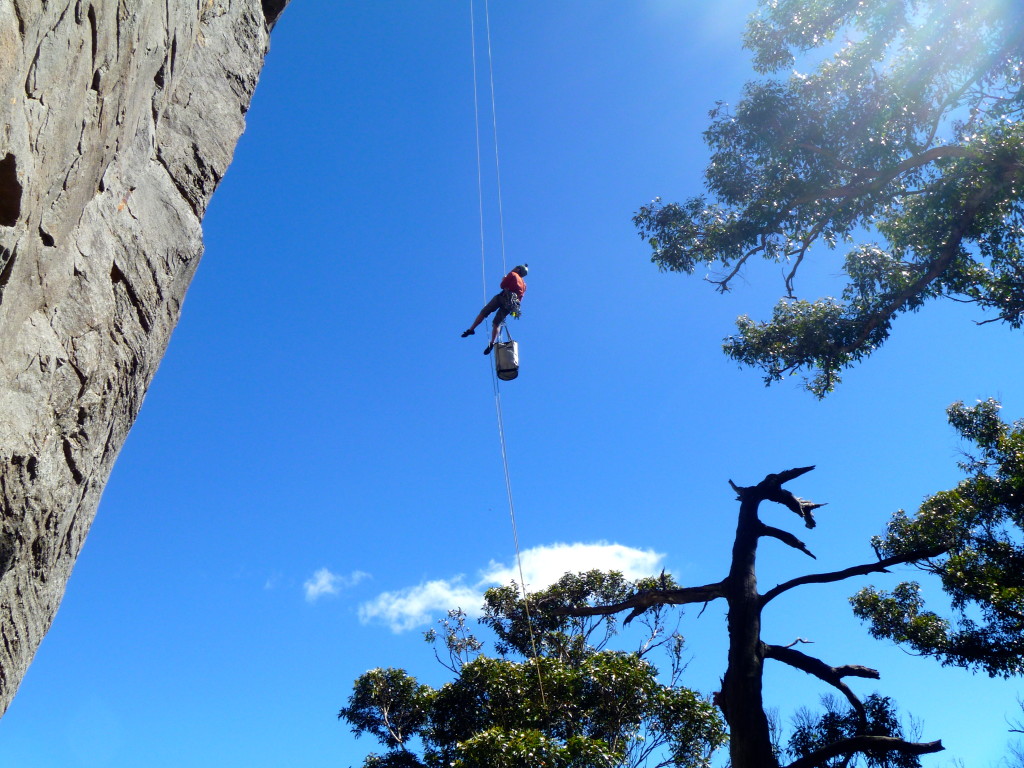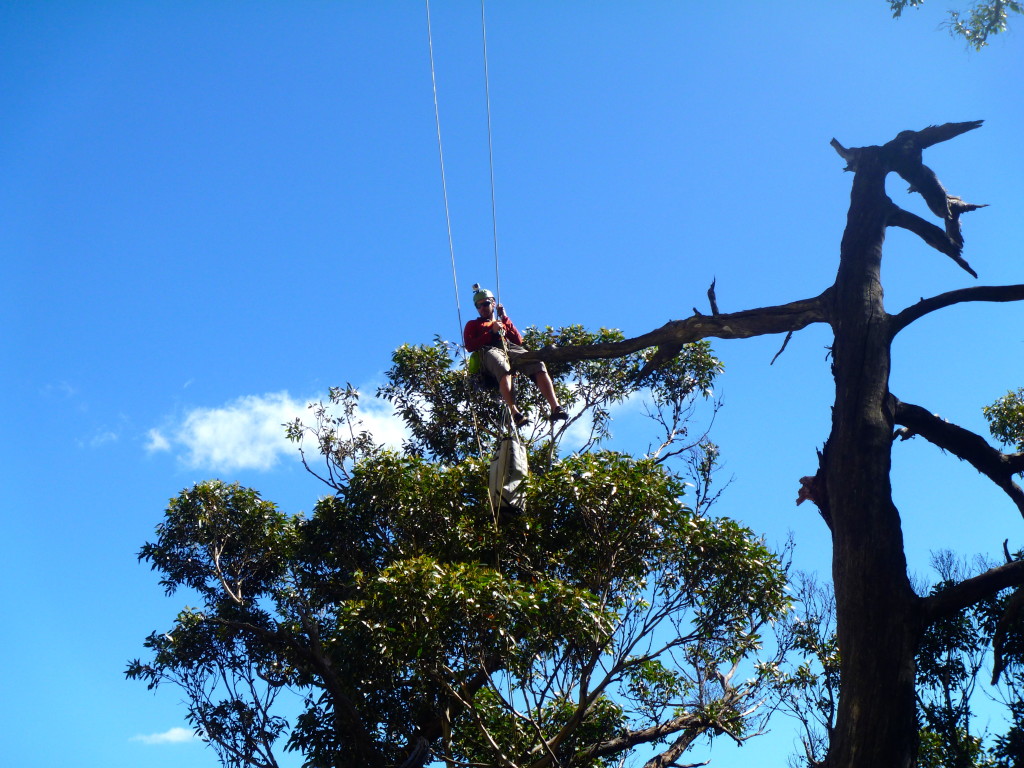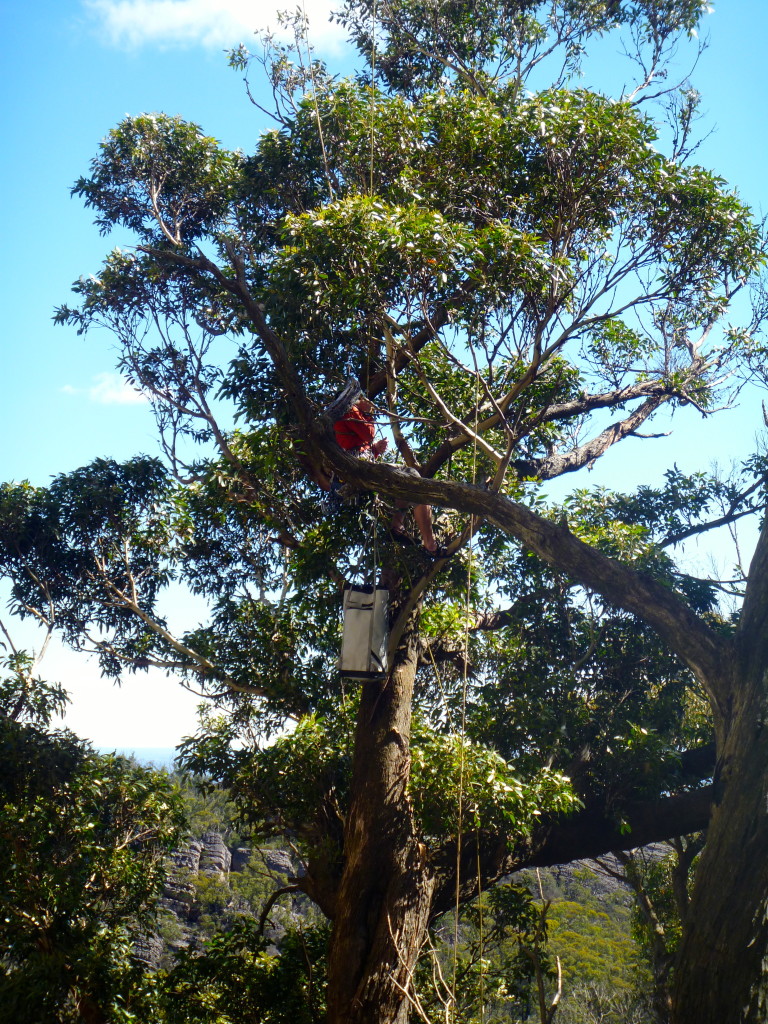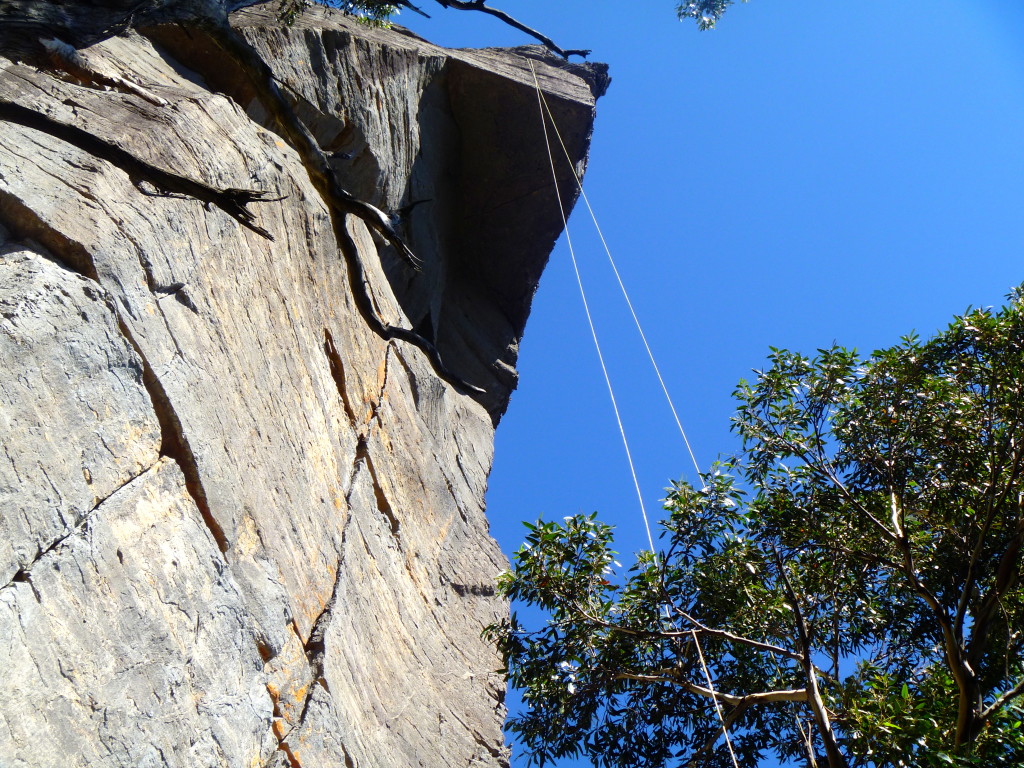My introduction to aid climbing – the infamous 7 meter roof crack climb in the Grampians, Victoria, needs little introduction. Way beyond my free climbing ability, but a very doable aid climb with the biggest rack I have ever seen.
Day 1 – Approach and lead 1st pitch
Mike Barnes and I drove over from Adelaide on Friday night, arriving at 1am. Saturday morning we were up and moving by 7am. The approach via a 4wd track and a portion of the Fortress circuit took about 1.5 hours. Our camping gear and food was as minimalistic as we could make it – considering that we had a huge rack, 20L of water and two ropes to carry in.
I lead the first pitch – a 50 meter, grade 20 vertical off-width crack that mostly took #5 C4 cams. The pitch took me about 4 hours to lead, fix the ropes and get down. I discovered that the #5 cams were so essential that I had to back clean and re-use them about 10 times.
I set up a top rope (by tying the two ropes we had together), and we had a crack at free climbing the pitch. I failed miserably, but luckily I now know how to aid my way past the hard bits!
The day’s climbing was followed by an easy cheat’s dinner of twiggy sticks, bars, cheese and fru-chocs. The sunset made up for the lack of flavour.
Day 2 – The roof pitch, and the escape
We bivvied that night on a rock at the base of the route. Up again the following morning at 6am – we made an early start at jugging up the fixed lines, hauling our pack full of food and water, and getting started of the business end of the route – the huge, unmistakable roof crack. The exposure was nothing short of dizzying.
Once Mike had finished leading the roof and fixed the line, it was then my turn to release the haul bag for Mike to bring up, deconstruct the anchor and get my game face on and jug/climb/re-aid/back-clean the pitch. This is much easier said than done – I honestly think seconding this pitch must be way harder than leading it. The feeling of dangling from the roof by my harness and aiders, with nothing but a 50m plunge to the trees below, was a little bit sickening at the worst of times, and a little bit exhilarating at the best!
By the time I reached the belay ledge and re-joined Mike, we had been sitting in our harnesses for about 7 hours. There were two options for getting down: 1) Lead a grade 15 pitch to the top of the buttress, from which we could do some sketchy scrambles and multiple abseils to get down the back. 2) Try abseiling the ~60m directly off the belay ledge using our gri-gris on the 70m lead rope, tied to our 60m haul line lengthened with a few lengths of accessory chord (just to make absolutely sure it would hit the ground so we could retrieve the ropes). We chose option 2. The biggest free-hanging abseil I have ever done, an absolute cracker way to finish.
Unfortunately, the haul line ended up getting stuck on something, so Mike ended up jugging back up to free the knot before abseiling back down.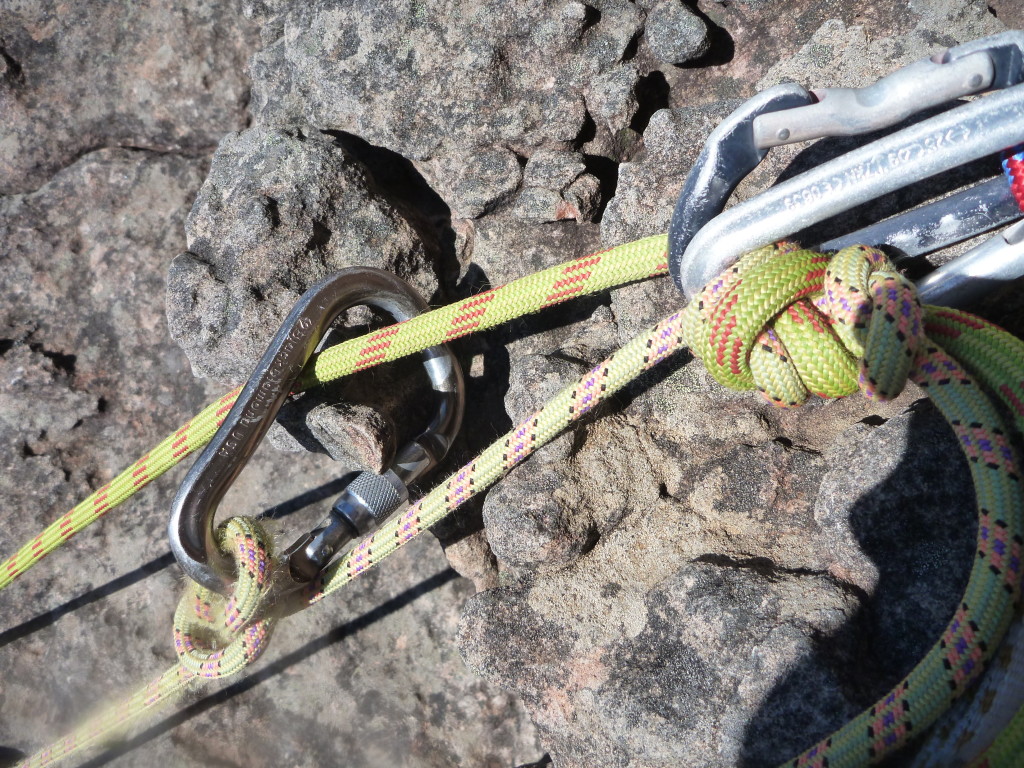
Once the carabiner had been released from the rock, it still took a 3 to 1 mechanical advantage system to overcome the rope drag and retrieve the rope. This added an extra 1.5 hours to the mission. By the time we got everything down and walked out to hit the road for Adelaide, it was about 5pm. I arrived home at 1am and went to work that Monday: absolutely shattered, but absolutely satisfied!
To date: probably the best route I’ve ever done. Definitely the most memorable.